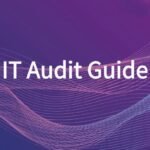The scope and content of IT audit work define what areas will be evaluated, how deeply they will be assessed, and what specific IT controls, systems, and risks are included. A clearly defined audit scope ensures that the IT audit aligns with business priorities, risk appetite, and compliance obligations. It also provides a foundation for structuring the audit activities, selecting frameworks, assigning responsibilities, and delivering actionable insights.
🔍 1. Defining the Scope of an IT Audit
An IT audit scope determines the breadth and depth of the review. It typically covers one or more of the following dimensions:
| Dimension | Description |
|---|---|
| Functional Scope | What IT functions or areas are under review (e.g., cybersecurity, infrastructure, applications, data governance)? |
| Organizational Scope | What departments, business units, subsidiaries, or geographies are included? |
| System Scope | Which systems, platforms, or technology stacks are audited (e.g., ERP, CRM, cloud environments)? |
| Process Scope | What IT processes are covered (e.g., incident management, change control, backup & recovery)? |
| Compliance Scope | What regulations or standards are being assessed (e.g., GDPR, SOX, ISO 27001, PCI-DSS)? |
| Risk-Based Scope | Focus on high-risk areas identified in prior audits, risk assessments, or recent incidents. |
🧱 2. Core Content Areas of IT Audit Work
An effective IT audit typically includes the evaluation of the following content domains. These areas can be audited as standalone audits or integrated into broader internal audit programs.
2.1. IT Governance and Management
- Review of IT governance structure, strategy, and alignment with business objectives
- Evaluation of IT policies, procedures, and documentation
- Assessment of roles, responsibilities, accountability, and decision rights
- IT performance and metrics reporting
2.2. IT Risk Management
- Identification and assessment of key IT and cybersecurity risks
- Review of the organization’s risk register and treatment plans
- Evaluation of IT risk management integration with enterprise risk management (ERM)
- Use of controls and risk mitigation strategies
2.3. Information Security and Cybersecurity
- Security policies, standards, and user awareness training
- Identity and access management (IAM), including user provisioning and privileged access
- Network and perimeter security (firewalls, VPNs, intrusion detection/prevention)
- Endpoint protection and mobile device security
- Encryption, antivirus, and data loss prevention (DLP) mechanisms
- Security event monitoring and incident response
2.4. Logical and Physical Access Controls
- Review of authentication mechanisms (e.g., MFA, password policies)
- Evaluation of access rights and segregation of duties (SoD)
- Termination and access revocation processes
- Physical security controls for data centers and server rooms
2.5. Change Management
- Change approval workflows and documentation
- Testing, rollback, and deployment procedures
- Emergency change protocols
- Segregation of duties in the change process
2.6. IT Operations and Infrastructure
- Monitoring of system availability, uptime, and performance
- Evaluation of server, database, and network infrastructure
- Review of incident and problem management processes (aligned with ITIL)
- Capacity planning and infrastructure scalability
2.7. Data Management and Data Integrity
- Data classification and governance practices
- Data backup, retention, and restoration policies
- Controls over data input, processing, and output
- Master data and metadata management
2.8. Application Controls
- General controls over business-critical applications
- Logical access, input validation, processing accuracy, and output controls
- Audit trail and logging mechanisms
- Application interface controls and integration checks
2.9. Disaster Recovery (DR) and Business Continuity (BCP)
- Review of DR and BCP documentation and testing frequency
- Backup strategies and offsite storage
- Recovery time objectives (RTO) and recovery point objectives (RPO)
- System redundancy and failover mechanisms
2.10. Cloud and Third-Party Management
- Governance over cloud service providers (CSPs) and SLAs
- Vendor risk management and third-party security assurance
- Integration of cloud into internal security monitoring and compliance
- Use of certifications (e.g., SOC 2, ISO 27001) by vendors
🛠 3. Optional Areas (Special Audits or Advanced Topics)
- AI and Data Analytics Audits: Assess AI models for fairness, bias, and governance
- DevSecOps Audits: Evaluate integration of security into agile and DevOps pipelines
- IoT Security: Review security controls over IoT devices and platforms
- IT Asset Management: Review of hardware/software inventory, lifecycle tracking, and license compliance
- SAP/ERP Audits: Specialized review of ERP configuration, access, and financial control alignment
🧾 Deliverables from the Scope Definition
A well-scoped audit should produce the following artifacts at the planning stage:
- Audit Charter (high-level objective and scope)
- Audit Scope Document (detailed boundaries and in-scope systems/processes)
- Audit Risk Assessment Matrix
- Initial Request List (systems, policies, logs, stakeholders to interview)
- Engagement Plan (timeline, team, tools, locations)
✅ Conclusion
The scope and content of IT audit work should be tailored to organizational priorities, risk exposure, industry standards, and compliance needs. Whether focused on cybersecurity, operational efficiency, or regulatory compliance, a clearly defined and structured audit scope lays the groundwork for a successful audit engagement and actionable insights.

- A Comprehensive Guide to IT Audit: Purpose, Frameworks, Processes, and Best Practices
- IT Audit Guide 01: What Is IT Audit? Why IT Audit Matters?
- IT Audit Guide 02: Why and When to Conduct IT Audit?
- IT Audit Guide 03: Common IT Audit Frameworks
- IT Audit Guide 04: Scope and Content of IT Audit Work
- IT Audit Guide 05: IT Audit Process (Step-by-Step Guide)
- IT Audit Guide 06: IT Audit Templates and Checklists
- IT Audit Guide 07: IT Audit Deliverables
- IT Audit Guide 08: IT Audit Best Practices

